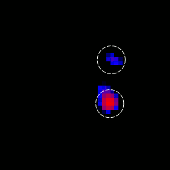ESA Science & Technology - Science Results
Science Results
Science Results
Using data from ESA's Gaia stellar surveyor, astronomers have identified four stars that are possible places of origin of 'Oumuamua, an interstellar object spotted during a brief visit to our Solar System in 2017.
Published: 25 September 2018
Data from the international Cassini spacecraft that explored Saturn and its moons between 2004 and 2017 has revealed what appear to be giant dust storms in equatorial regions of Titan.
Published: 24 September 2018
ESA's star mapping mission, Gaia, has shown our Milky Way galaxy is still enduring the effects of a near collision that set millions of stars moving like ripples on a pond.
Published: 19 September 2018
The mass of a very young exoplanet has been revealed for the first time using data from ESA's star mapping spacecraft Gaia and its predecessor, the quarter-century retired Hipparcos satellite.
Published: 20 August 2018
An enigmatic X-ray source revealed as part of a data-mining project for high-school students shows unexplored avenues hidden in the vast archive of ESA's XMM-Newton X-ray Observatory.
Published: 10 August 2018
Radar data collected by ESA's Mars Express point to a pond of liquid water buried under layers of ice and dust in the south polar region of Mars.
Published: 25 July 2018
The Planck consortium has made their final data release, including new processing of the cosmic microwave background temperature and polarisation data. This legacy dataset confirms the model of an 'almost perfect Universe', with some remaining oddities giving researchers some intriguing details to puzzle over.
Published: 17 July 2018
An international team has found first evidence of a source of high-energy neutrinos: a flaring active galaxy, or blazar. Following a detection by the IceCube Neutrino Observatory, ESA's INTEGRAL satellite joined a collaboration of observatories in space and on the ground that kept an eye on the neutrino source, heralding the thrilling future of...
Published: 12 July 2018
An object from another star system that made a brief appearance in our skies guised as an asteroid turns out to be a tiny interstellar comet.
Published: 27 June 2018
'Oumuamua, the first interstellar object discovered in the Solar System, is moving away from the Sun faster than expected. This anomalous behaviour was detected using the NASA/ESA Hubble Space Telescope in cooperation with ground-based telescopes.
Published: 27 June 2018
Data from the international Cassini spacecraft have revealed complex organic molecules originating from Saturn's icy moon Enceladus, strengthening the idea that this ocean-world hosts conditions suitable for life.
Published: 27 June 2018
An international team of astronomers using the NASA/ESA Hubble Space Telescope and the European Southern Observatory's Very Large Telescope has made the most precise test of general relativity yet outside our Milky Way.
Published: 21 June 2018
After a nearly twenty-year long game of cosmic hide-and-seek, astronomers using ESA's XMM-Newton space observatory have finally found evidence of hot, diffuse gas permeating the cosmos, closing a puzzling gap in the overall budget of 'normal' matter in the Universe.
Published: 20 June 2018
ESA's XMM-Newton observatory has discovered the best-ever candidate for a very rare and elusive type of cosmic phenomenon: a medium-weight black hole in the process of tearing apart and feasting on a nearby star.
Published: 18 June 2018
A new database of plasma simulations, combined with observational data and powerful visualisation tools, is providing planetary scientists with an unprecedented way to explore some of the Solar System's most interesting plasma environments.
Published: 14 June 2018
Data from the international Cassini mission has revealed that a phenomenon called magnetic reconnection can occur on the dayside of Saturn, within the planet's magnetic environment.
Published: 5 June 2018
ESA's XMM-Newton observations of a neutron star merger, obtained a few months after its discovery via gravitational waves, caught the moment when its X-ray emission stopped increasing, opening new questions about the nature of this peculiar source.
Published: 31 May 2018
Using the unparalleled sharpness and ultraviolet observational capabilities of the NASA/ESA Hubble Space Telescope, an international team of astronomers has created the most comprehensive high-resolution ultraviolet-light survey of star-forming galaxies in the local Universe. The catalogue contains about 8000 clusters and 39 million hot blue stars.
Published: 17 May 2018
A rare phenomenon connected to the death of a star has been discovered in observations made by ESA's Herschel space observatory: an unusual laser emission from the spectacular Ant Nebula, which suggests the presence of a double star system hidden at its heart.
Published: 16 May 2018
Astronomers using the NASA/ESA Hubble Space Telescope have detected helium in the atmosphere of the exoplanet WASP-107b. This is the first time this element has been detected in the atmosphere of a planet outside the Solar System.
Published: 2 May 2018
—
20 Items per Page




















